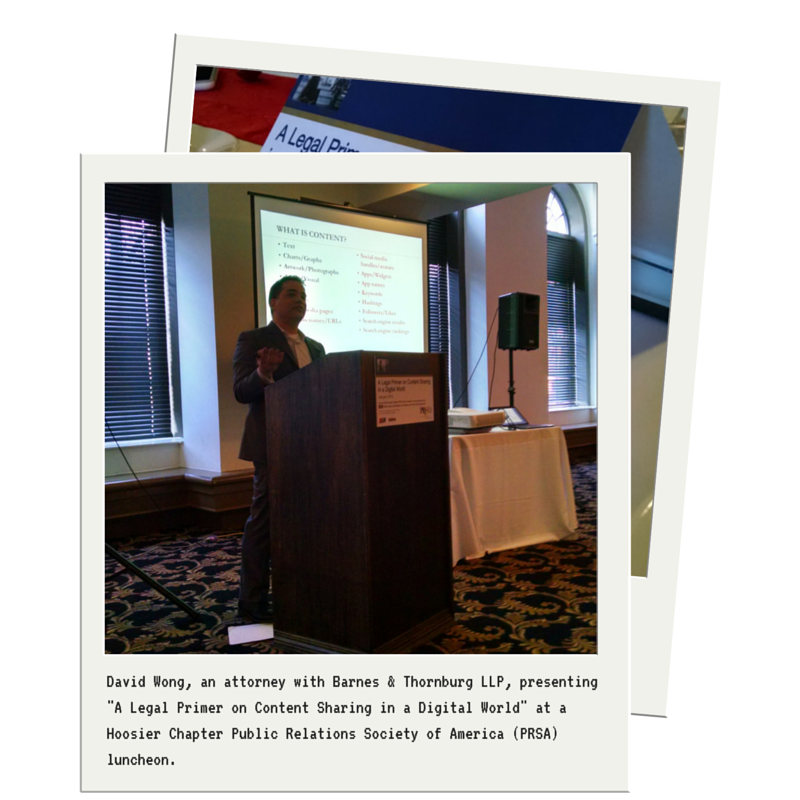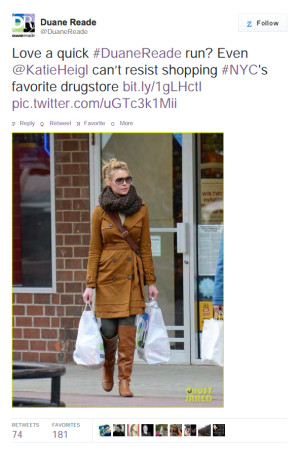Do you manage any form of content for your organization, such as your company’s career site or social media channels? Or maybe you have a personal blog or social media accounts that you update on a regular basis? In either case, it’s important to understand the legalities around sharing material to avoid putting your employer, or yourself, at risk for possible copyright and trademark pitfalls.

Disclaimer: Obviously I’m not a lawyer and this is not legal advice. Always consult your legal counsel on these matters. Now, with that out of the way, let’s dive in.
Copyright basics:
Copyright refers to an original work of authorship. Could be a blog post, photograph or book. The definition from the United States Copyright Office reads:
Copyright:
A form of protection provided by the laws of the United States for “original works of authorship”, including literary, dramatic, musical, architectural, cartographic, choreographic, pantomimic, pictorial, graphic, sculptural, and audiovisual creations. “Copyright” literally means the right to copy but has come to mean that body of exclusive rights granted by law to copyright owners for protection of their work. Copyright protection does not extend to any idea, procedure, process, system, title, principle, or discovery. Similarly, names, titles, short phrases, slogans, familiar symbols, mere variations of typographic ornamentation, lettering, coloring, and listings of contents or ingredients are not subject to copyright.
Copyright notice:
The copyright notice consists of three elements. They are the “c” in a circle (©), the year of first publication, and the name of the owner of copyright. A copyright notice is no longer legally required to secure copyright on works first published on or after March 1, 1989, but it does provide legal benefits.
So what is protected by copyright? The United States Copyright Office website covers this question as follows:
Copyright protects “original works of authorship” that are fixed in a tangible form of expression. The fixation need not be directly perceptible so long as it may be communicated with the aid of a machine or device. Copyrightable works include the following categories:
- literary works
- musical works, including any accompanying words
- dramatic works, including any accompanying music
- pantomimes and choreographic works
- pictorial, graphic, and sculptural works
- motion pictures and other audiovisual works
- sound recordings
- architectural works
These categories should be viewed broadly. For example, computer programs and most “compilations” may be registered as “literary works”; maps and architectural plans may be registered as “pictorial, graphic, and sculptural works.”
Wong explained that works published prior to 1923 are most likely in public domain. Works created after 1978 or the lifetime of the author plus 70 years are protected.
Tip: To make it easy and play it safe – assume it’s all protected.
When you want to use something you found online:
Maybe it’s a great photo for recruitment marketing collateral or your career website, or you want to use that song you heard on the radio the other day.
As Wong pointed out, the digital space is unique because it’s typically easy for the owner to find out if you have used his/her work without permission. Stock photography websites are particularly quick to track if their images are being used without the properly purchased licenses and will send you a letter regarding its unauthorized use.
When it comes to music, which is popular in online videos, there’s typically a copyright on both the composition and on the sound recording. Popular songs are probably registered, so on platforms like YouTube, your video can be at risk for being removed or having its audio muted.
Ideally, you need to secure permission or a license from the owner of the work. Furthermore, even if you receive permission, you should also require representation of ownership and indemnification for the source. One way that we do this at DirectEmployers is by having all guest bloggers acknowledge in writing, usually via email, that they understand our guidelines, which are written to include that specific verbiage.
There is material you can share under Creative Commons. This license enables the creators of intellectual property to give people the right to share, use and build upon the work you’ve created. In addition, consider the Law of Fair Use. Wong cautioned this is a “squishy” area of the law that is complex and confusing, and advised that if you can easily secure a license for a reasonable price, consider doing so.
When in doubt, and arguably the safest bet, develop your own work. If you desperately want to use someone else’s content but you’re unsure about the rights and can’t track down the work’s owner, you might be better off finding an alternative.
Tip: Exercise caution when using works of others. When possible, develop your own work, or tap into internal resources.
Who owns content:
When you examine the complexities of employees using social media, it’s important to establish upfront and in writing what your company’s policies are to avoid lawsuits, like the case of Noah Kravitz, whose former employer sued him for his Twitter followers.
Then there’s trademark:
Wong also briefly discussed trademark, defining it as a word, phrase or symbol that is legally registered. The United States Patent and Trademark Office (USPTO) has a must-watch video on what it means as well as guidelines around trademark basics (warning, it’s over 40 minutes):
But wait, there’s more!
Content curators and creators should also be familiar with the Right of Publicity. This gives the right of every individual to control any commercial use of his or her name, image, likeness and so on. Wong shared an instance of this when actress Katherine Heigl sued New York pharmacy Duane Reade after the company tweeted this (image and full story available at: http://marketingland.com/heigl-vs-duane-reade-lesson-tweet-79926):
And finally, let’s not forget disclosures:
One of the other topics in the presentation skimmed over disclosures, endorsements and testimonials. In 2013, the Federal Trade Commission (FTC) released the first update to the .com Disclosures guide. Sara Hawkins published a great run down on what marketers need to know about the FTC disclosures via SocialMediaExaminer.com.
Tip: Essentially, anytime a company provides money, gifts or prizes as an incentive for blogging or posting updates about a product, that disclosure must be made.
My hope is that this helped you avoid some potential hurdles in your future endeavors. Sometimes this can be overwhelming, but by reading blogs, attending professional events hosted by fantastic organizations like local chapters of PRSA, and consulting with your legal resources, you’ll be able to stay out of trouble and continue producing great digital content.

